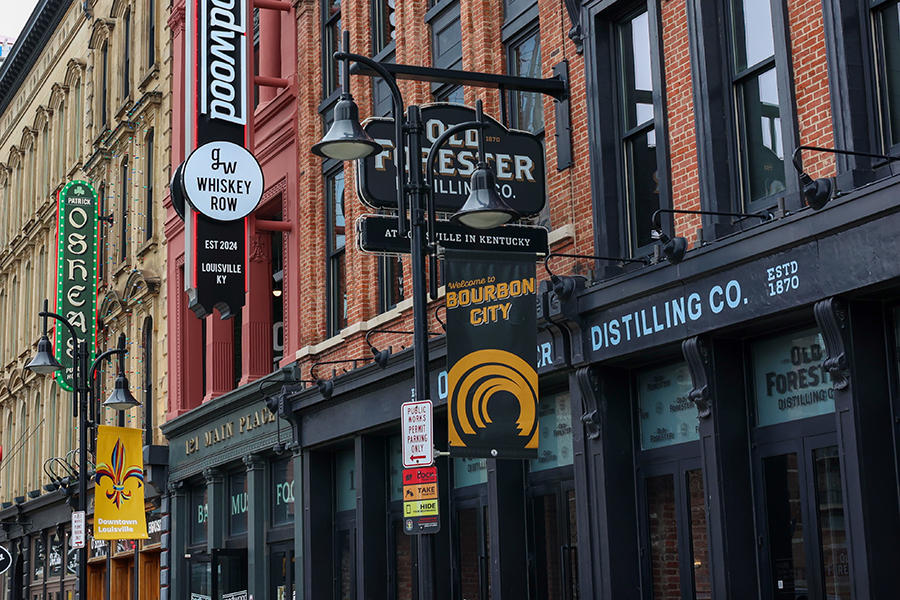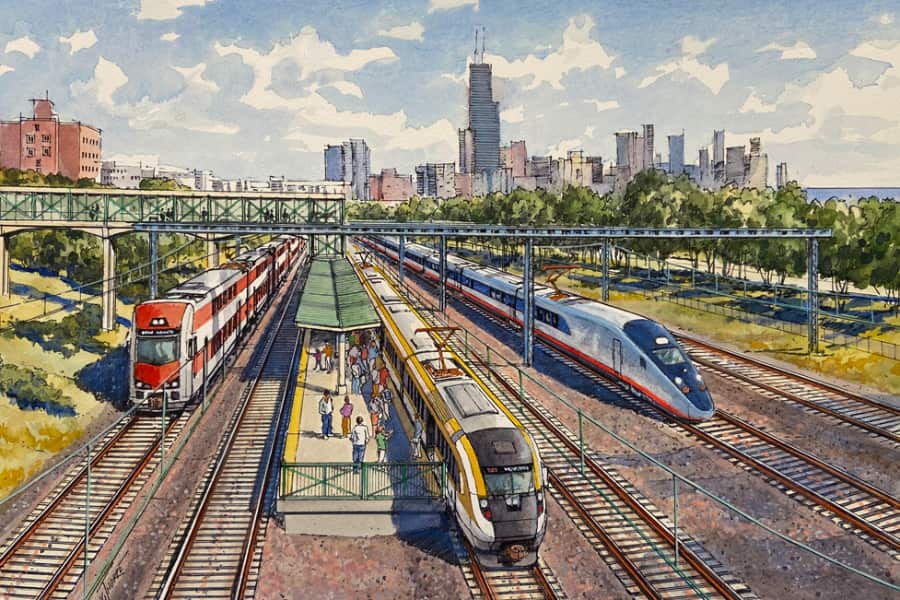Chicago Union Station needs a new entrance at Van Buren StreetAmtrak's plans for accessing the rebuilt mail platform is on the wrong track It is not too late for the State of Illinois to insist on a direct entrance. The City and State have a huge opportunity to grow...
Guest Post by F.K. Plous
A recent story in The Hill “How 4 key infrastructure projects centered in Italy will reshape the European transit map”,—and many others like it—offers further proof that Europe is pulling way ahead of the U.S. in building advanced infrastructure projects designed to develop a new trans-national, pan-European economy and polity.
If you follow this and other developments—including Europe’s increasing investment in and commitment to the defense of Ukraine, it is hard to escape the notion that Europe is acting more and more like a single nation and that this new “nation” has identified a bigger future for itself and is pulling ahead of the U.S. in economic might and global influence. It’s not that the U.S. is in decline, actually; it’s simply that since the collapse of the Soviet Union all of the nations to the west of Russia have started acting more and more like a single nation and are committing billions of dollars to advanced infrastructure projects—most of them based on rail technology—that will tie all of Europe together into a single economic unit able to outperform the U.S.
The new infrastructure will enable a traveler in Helsinki or Stockholm to board an overnight sleeping-car train at 9 p.m. and arrive in Naples at 9 a.m..
Get Involved
Tell Congress: It’s time to reconnect the country with high-speed and regional rail!
And although it’s not mentioned in this story, the Poles and the Baltics are hard at work on a new railroad that will connect Warsaw with all three Baltic capitals—Kaunas, Lithuania; Riga, Latvia; and Tallinn, Estonia. Historically, these three little nations were part of the Russian empire and were tied directly to Moscow with 5-foot-gauge Russian tracks. The new railroad will be European standard-gauge—4 feet 8 1/2 inches–so trains from Western Europe will be able to continue into the Baltics (but not beyond, into Russia). For the first time since the Middle Ages, the Baltics will face west (there’s even a plan to extend the system via a 22-mile tunnel under the Gulf of Finland into Helsinki. There’s also talk that the Ukrainians are going to convert their rail system from the Russian to the European gauge (making it virtually impossible for the Russians to run trains into Ukraine).
So far few commentators have caught these developments and tied them into a single story: the U.S. has a new geopolitical rival: a united Europe that seems to have solved the ancient “nationality question” and established itself as something the world has never seen before: an artificial “super nation” equal in economic and military power to the U.S. and China—and way, way ahead of Russia– but with the ethnic, linguistic and historical integrity of its member-states intact.
And at the center of it sits advanced railways. When will this country free itself from its fantasies of past glory and use modern railways and transit systems to move toward the future?
And when will the media start covering modern railroads as global tool for economic development and not viewing a U.S. passenger rail system as a fantasy for hobbyists?
The projects referenced in the story are:
The 40-mile Brenner Base Tunnel linking Austria and Italy
The Tortona-Genoa high-speed line and 22-mile tunnel
The Lyon-Turin high-speed line and the 36-mile Mont d’Ambin Base Tunnel
And, though its old news now, the 35-mile Gotthard Base tunnel links Italy to Switzerland and Germany
The Latest from HSRA
Our Latest Blog Posts
Check out the latest news, updates, and high speed rail insights from our blog!





